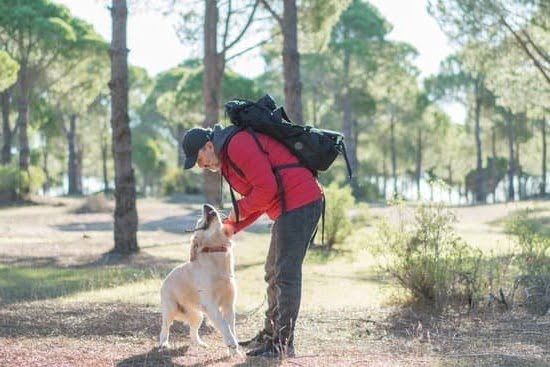Training a rescue dog basic commands is essential not only for their safety but also for building a strong bond with your new furry companion. Understanding the importance of this training can make a huge difference in the adjustment process for both you and your rescue dog. These basic commands, such as sit, stay, come, and heel, provide structure and communication that can help your dog feel secure in their new environment.
Before diving into training, it is crucial to assess your rescue dog’s temperament and background. Each dog comes with its own set of experiences and challenges that may impact their training progress. By taking the time to understand where your dog is coming from, you can tailor your approach to meet their specific needs and set them up for success.
Creating a positive training environment at home is key to effective learning. This includes setting up a consistent routine, eliminating distractions, and using rewards to reinforce good behavior. Through establishing leadership and building trust with your rescue dog, you can create a strong foundation for successful training sessions. By following these guidelines, you are on your way to teaching your rescue dog basic commands and fostering a positive relationship based on trust and respect.
Assessing Your Rescue Dog’s Temperament and Background
When bringing a rescue dog into your home, it’s important to understand that each dog comes with their own unique temperament and background. Assessing your rescue dog’s personality and history can help you tailor your training approach to suit their needs.
Understanding Their Past
Rescue dogs often come from diverse backgrounds, which can include neglect, abuse, or lack of socialization. It’s crucial to be patient and gentle with your new furry friend as they may have trauma or anxiety related to their past experiences. Take the time to observe their behavior and reactions in different situations to get a better understanding of how to help them feel safe and secure.
Evaluating Their Temperament
Before diving into training your rescue dog basic commands, take the time to assess their temperament. Are they shy and timid, or energetic and confident? Knowing this information can guide you in selecting the right training methods that will work best for your individual dog. Be sure to approach training with empathy and positive reinforcement techniques that align with their personality traits.
Seeking Professional Advice
If you are uncertain about how to train rescue dog basic commands based on their temperament or background, don’t hesitate to seek advice from a professional trainer or behaviorist. They can provide valuable insights and guidance on how to build a strong foundation for training your rescue dog effectively. Remember that every dog is different, so what works for one may not necessarily work for another.
Creating a Positive Training Environment at Home
Rescue dogs may come from a variety of backgrounds and experiences, so creating a positive training environment at home is crucial to their success in learning basic commands. Here are some tips on how to set up your home for effective training sessions with your rescue dog:
- Designate a Quiet Space: Choose a quiet area in your home where you can focus on training without distractions. This could be a corner of the living room or a spot in the backyard.
- Gather Training Supplies: Make sure you have all the necessary training supplies handy, such as treats, a leash, and toys. Having these items readily available will help keep your training sessions running smoothly.
- Remove Hazards: Before starting any training session, make sure to remove any hazards or obstacles in the training area that could potentially distract or harm your rescue dog during the process.
Creating a positive training environment also involves establishing a routine that your rescue dog can rely on. Consistency is key when it comes to training basic commands, so make sure to schedule regular training sessions at the same time each day. By doing so, you can help your rescue dog feel more secure and comfortable during the learning process.
Additionally, remember to keep things fun and engaging for your rescue dog during training sessions. Use plenty of praise, treats, and playtime to reinforce good behavior and motivate them to learn. By making training enjoyable for your furry friend, you’ll be well on your way to successfully teaching them essential commands like sit, stay, come, and heel.
Lastly, remember that patience is an essential part of creating a positive training environment at home for your rescue dog. Understand that it may take time for them to adjust to their new surroundings and trust you as their trainer. With consistency, love, and dedication, you can create an environment that sets the stage for successful basic command training sessions with your rescue dog.
Establishing Leadership and Building Trust With Your Rescue Dog
Understanding Your Rescue Dog’s Needs and Behavior
Before diving into training your rescue dog on basic commands, it is crucial to take the time to understand their needs and behavior. Many rescue dogs come from various backgrounds and may have experienced trauma or neglect in the past. This can affect their trust in humans and willingness to follow commands. By observing your dog’s body language, listening to their vocalizations, and considering their background, you can better tailor your training approach to meet their specific needs.
Building Trust Through Consistency and Positive Reinforcement
One of the key elements in establishing leadership with your rescue dog is consistency. Dogs thrive on routine and structure, so it is important to set clear rules and boundaries from the beginning.
By being consistent with your commands, rewards, and consequences for unwanted behavior, you can help your rescue dog understand what is expected of them. Additionally, using positive reinforcement techniques such as treats, praise, or toys can strengthen the bond between you and your dog while motivating them to learn new commands.
Creating a Strong Bond Through Training Sessions
Training sessions are not only a way to teach your rescue dog basic commands but also an opportunity to build a strong bond with them. By engaging in regular training sessions with your dog, you can establish yourself as a leader they can trust while providing mental stimulation and physical activity.
Remember to keep training sessions short, fun, and rewarding for your dog to maintain their interest and enthusiasm. Be patient with your rescue dog as they learn new commands, celebrate small wins along the way, and always end each session on a positive note to reinforce their confidence in you as a leader.
By taking the time to establish leadership and build trust with your rescue dog through consistent training efforts, you can set a solid foundation for teaching them basic commands effectively. Understanding your dog’s needs, being consistent in your approach, using positive reinforcement techniques, and creating a strong bond through training sessions will not only strengthen your relationship but also enhance their overall well-being.
Teaching Sit, Stay, Come, and Heel Commands
When it comes to training rescue dogs basic commands, teaching them how to sit, stay, come, and heel are essential skills that can help build a strong foundation for further training. By mastering these commands, you can ensure better obedience and safety for your furry companion. Here are step-by-step instructions on how to train rescue dog basic commands:
- Sit Command: Start by holding a treat close to your dog’s nose and slowly lifting it above their head. As their gaze follows the treat upwards, their bottom will naturally lower into a sitting position. Once they are in the sitting position, give them the treat and praise them.
- Stay Command: Begin with your dog in a sitting position. Hold your hand up like a stop sign in front of their face while saying “stay.” Take a step back and reward them if they stay put. Gradually increase the distance between you and your dog before giving the treat.
- Come Command: Use a leash for this command initially. Call your dog’s name followed by “come” in an enthusiastic tone while gently pulling on the leash towards you. When they reach you, reward them with treats and affection.
In addition to these basic commands, teaching your rescue dog how to heel is crucial for safe walks and outings. Here’s how you can work on this command:
- Heel Command: Start with your dog on a leash at your side. Whenever they start to pull ahead or lag behind, say “heel” while gently guiding them back into the correct position next to you using treats as rewards for staying close.
Consistency is key when training rescue dogs basic commands. Be patient and practice these commands regularly in short sessions to reinforce good behavior effectively.
Using Positive Reinforcement Techniques to Encourage Good Behavior
Rescue dogs, given their unique backgrounds and experiences, often respond very well to positive reinforcement techniques when it comes to training basic commands. Using rewards such as treats, praise, or playtime can motivate and encourage good behavior in your rescue dog. Positive reinforcement not only helps build a strong bond between you and your furry companion but also makes the training process enjoyable for both of you.
When using positive reinforcement, it is important to reward your rescue dog immediately after they exhibit the desired behavior. This instant gratification helps them understand what they did right and increases the likelihood of them repeating that behavior in the future. Consistency is key when using this training method – make sure to reward good behavior every time it occurs to reinforce the connection between the action and the reward.
Another important aspect of positive reinforcement is to keep training sessions short and fun. Training your rescue dog should be a positive experience for both of you, so make sure to incorporate playtime and breaks in between sessions. By keeping the atmosphere light-hearted and enjoyable, you will create a conducive environment for learning and bonding with your furry friend.
| Positive Reinforcement Techniques | Encouraging Good Behavior |
|---|---|
| Immediate rewards after desired behavior | Helps reinforce connection between action and reward |
| Consistency in rewarding good behavior | Increases likelihood of behavior repetition |
| Short, fun training sessions | Create a positive experience for you and your rescue dog |
Troubleshooting Common Training Challenges With Rescue Dogs
Rescue dogs often face unique challenges when it comes to learning basic commands due to their background and past experiences. Some common training challenges that owners may encounter include fearfulness, anxiety, or reluctance to follow commands. It is important to approach these challenges with patience and understanding, as rescue dogs may require more time and effort to overcome their issues.
One of the key strategies in overcoming training challenges with rescue dogs is to focus on building trust and establishing a strong bond with your furry companion. By creating a safe and positive training environment, you can help your rescue dog feel more secure and confident in learning new commands. Consistency, patience, and positive reinforcement are essential in gaining your dog’s trust and cooperation during training sessions.
When faced with difficulties in teaching basic commands such as sit, stay, come, and heel, it is important to break down the steps into smaller, more manageable tasks. This can help prevent your rescue dog from feeling overwhelmed or confused during training. Additionally, using high-value treats or rewards can provide extra motivation for your dog to follow through with the commands. Remember to keep training sessions short and engaging to maintain your dog’s interest and focus on learning.
By addressing common training challenges with patience, persistence, and positive reinforcement techniques tailored to your rescue dog’s needs, you can help them succeed in mastering basic commands. Celebrate small wins along the way and be sure to acknowledge progress made by your furry friend. With dedication and commitment from both you and your rescue dog, overcoming training challenges can lead to a stronger bond and a happier life together.
Setting Realistic Expectations and Celebrating Small Wins
Training a rescue dog can be a rewarding experience, but it is essential to set realistic expectations and celebrate small wins along the way. Rescue dogs often come with unknown backgrounds and may have experienced trauma or neglect in the past, which can impact their behavior and ability to learn new commands. By taking a patient and positive approach, you can help your rescue dog build confidence and trust in you as their new owner.
When training your rescue dog basic commands, it is important to keep in mind that progress may be gradual. Some rescue dogs may take longer to learn commands or exhibit fear or anxiety during training sessions. It’s crucial to be patient, consistent, and understanding throughout the training process. Celebrate even small milestones, such as a successful “sit” or “stay,” as they are significant achievements for your rescue dog.
One effective way to set realistic expectations and celebrate small wins is to break down each command into manageable steps. For example, when teaching the “sit” command, start by luring your dog into a sitting position using a treat. Once they understand the action, gradually phase out the treat until they respond reliably to the verbal cue alone.
By breaking down commands into smaller tasks and acknowledging progress along the way, you can build confidence in both yourself and your rescue dog. Remember, every step towards mastering basic commands is a victory worth celebrating.
Conclusion
Training your rescue dog in basic commands can be a rewarding experience for both you and your furry companion. By taking the time to assess their temperament and background, creating a positive training environment, and establishing trust, you are setting the foundation for a successful training journey.
Through patience, consistency, and positive reinforcement techniques, you can teach your rescue dog essential commands like sit, stay, come, and heel. These commands not only create a well-behaved pet but also ensure their safety and enhance your bond with them.
While there may be some challenges along the way, setting realistic expectations and celebrating small wins is key to staying motivated. Remember that every dog learns at their own pace, so be patient with them as they navigate this new learning experience. In the end, the rewards of training your rescue dog basic commands will be evident in their improved behavior and strengthened relationship with you.
Frequently Asked Questions
What Is the 3 3 3 Rule for Rescue Dogs?
The 3-3-3 rule for rescue dogs states that it takes about 3 days for a dog to decompress and adjust to its new surroundings, 3 weeks for the dog to start feeling comfortable in its new home, and 3 months for the dog to fully settle in and show its true personality.
What Are the 7 Basic Commands for Dog Training?
The seven basic commands for dog training are sit, stay, come, down, heel, off, and no. These commands form the foundation of obedience training and help establish a clear line of communication between the owner and the dog.
How Do You Start Training a Rescue Dog?
When starting to train a rescue dog, it is important to first build trust and establish a strong bond with the animal. Patience, consistency, positive reinforcement, and using their favorite treats can help motivate them during training sessions. It’s crucial to start with basic commands before moving on to more complex ones.

Welcome to the blog! I am a professional dog trainer and have been working with dogs for many years. In this blog, I will be discussing various topics related to dog training, including tips, tricks, and advice. I hope you find this information helpful and informative. Thanks for reading!





